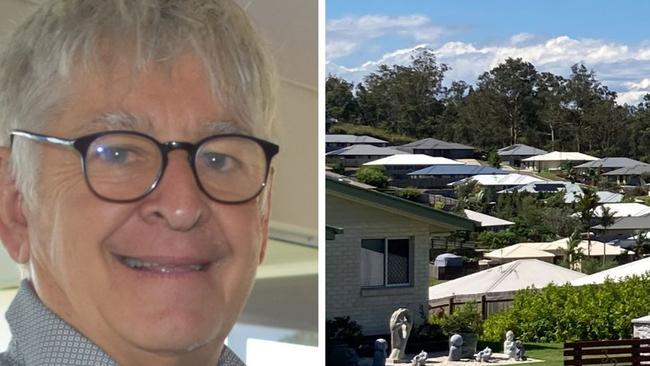Greg Martoo, Brian Roberts weigh in on Gympie housing crisis fix
Gympie will need to rethink its tough stance against density housing if it wants to ease the crisis that has engulfed the state and this region.

Gympie
Don't miss out on the headlines from Gympie. Followed categories will be added to My News.
Recent changes restricting some higher density housing developments across Gympie are among several key issues that will need to be scrutinised if the region wants to fix its housing crisis, industry experts say.
Questions over the future of residential development have arisen following an October summit into affordable housing across Queensland, which determined “gentle density” was key to navigating a path out of the crisis.
“Gentle density” refers to dual occupancies, townhouses and triplexes.
It would likely spur some soul searching among industry leaders given Gympie’s long-held reputation for lifestyle living, a view backed up by figures from the Australian Bureau of Statistics
Its 2021 data shows the Gympie medium and high density housing rates well below the average across regional Queensland areas.
Out of the region’s 24,718 homes, only 1750 (7.1 per cent) are medium density, compared to 16.3 per cent across regional Queensland.
The rate of high density housing was worse, with only 0.1 per cent of the region’s homes (23 buildings) classed as high density.
The regional Queensland rate was 8 per cent.
In contrast, 89 per cent of Gympie’s homes were stand-alone residences, well above of the 72.4 per cent average.
Longtime consultant Greg Martoo said the region’s scheme did not support townhouses or triplexes in its residential living zones, which were the most common areas, and said building duplexes had been made harder in recent years too.
“Amendments to the planning scheme further limited those residential living sites significantly where council would support dual occupancy development,’ Mr Martoo said.
Any change to the scheme to allow for higher density homes would likely incur changes to the scheme’s amenity protections, he said.

These could include more landscaping, better protections on privacy, and more options for developers to “personalise” their homes to “avoid repetitive designs”.
They had a potential to be a double-edged sword, leading to cost blowouts for developers as a result of the council needing more information, increasing the time it takes to secure approval, and more conditions being imposed.
“Any increase in residential density of an established residential area will require the balancing of political, legal, technical, economic and urban design considerations,” Mr Martoo said.
Roberts Bros owner and developer Brian Roberts said any changes to the region’s housing density “comes down to council zoning and what they’re prepared to do”.
“They don’t seem to be very flexible,” Mr Roberts said.

Increasing density was no easy task, he said.
The region was hamstrung by its landscape, where there was often a binary of hills or flood prone plains.
Where higher density housing could feasibly be built was another problem.
These were ideally placed in “relative convenience” to shops and amenities, but Gympie was “like a madwoman’s spaghetti, spread out north and south”.
The lack of sewerage and water services outside the city was a hindrance too.
Gympie Mayor Glen Hartwig said the council was open to exploring ways to increase density as part of its review of its planning scheme.
However any changes needed to balance with the “flavour of country life that attracts people to the region”.

Future redevelopment of some parts of the city was not being ruled out.
“If there’s an opportunity to remove a house and bring in higher density, as long as it maintains (the) amenity (of the area), we’re open to all options,” Mr Hartwig said.
Sustainability director Adrian Burns said work was underway on a housing and land supply report ahead of work on the new planning scheme.
“It is apparent from the work undertaken thus far that there is a lack of diversity in the housing stock (in terms of type, size, price and nature of tenure) across the Gympie region,” Mr Burns said.
“It is also recognised that this situation is not uncommon throughout regional Queensland, despite most planning schemes, including Gympie’s current planning scheme, enabling the development of a range of dwelling types.”
In September the Gympie council became the first in Queensland to adopt a housing access plan outlining how it would help combat growing homelessness.





